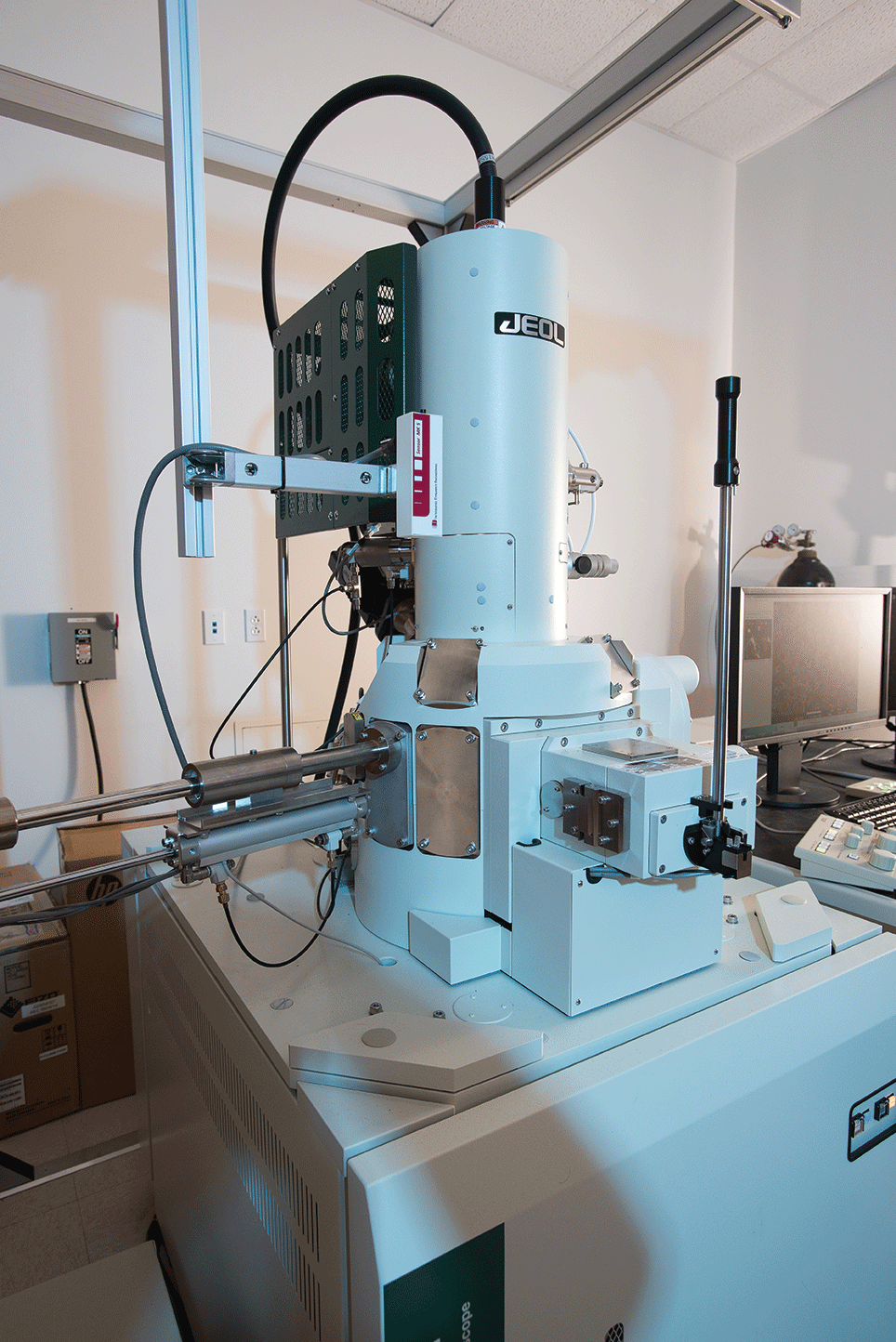Object Lesson: Scanning Electron Microscope
The College of Science & Engineering’s new purchase has students and professors seeing small.

Photo by Glen E. Ellman.
Object Lesson: Scanning Electron Microscope
The College of Science & Engineering’s new purchase has students and professors seeing small.
A single particle of smoke is one-millionth of a meter. The College of Science & Engineering’s new scanning electron microscope can see 1,000 times smaller.
Acquired in 2014, the Japanese-made microscope has a resolution of two nanometers – nearly three orders of magnitude smaller than previously available.
What is there to view at one-billionth of a meter? Plenty, says Jeffrey Coffer, professor of chemistry, who oversaw the acquisition.
Coffer uses the device and the college’s transmission electron microscope for his research on silicon nanotubes, used for drug delivery and tissue engineering.
The newer scanning microscope gives an “outside view” of an object, such as the topography and morphology of a grain of sand. The transmission electron microscope, which TCU purchased in 2008, has a sharper resolution of 0.26 of a nanometer and can see through an object to analyze its internal structure.
“The two microscopes complement one another,” said Coffer. “Science is becoming increasingly molecular. We need to be able to see at higher and higher magnification.”
What Coffer likes best is that select undergraduates learn to use the technology, unlike at most other institutions that hire full-time technicians to operate it exclusively.

Your comments are welcome
Comments
Related reading:
Alumni
A man, the moon and a volcano
Hawaii teacher Justin Brown ’09 and his robotics program students are helping NASA test technology to repel lunar dust.
Features, Research + Discovery
Engineering a Possible Diabetes Treatment
Lauren Getz is working to coat pancreatic islet cells in hopes of improving treatment of Type 1 diabetes.